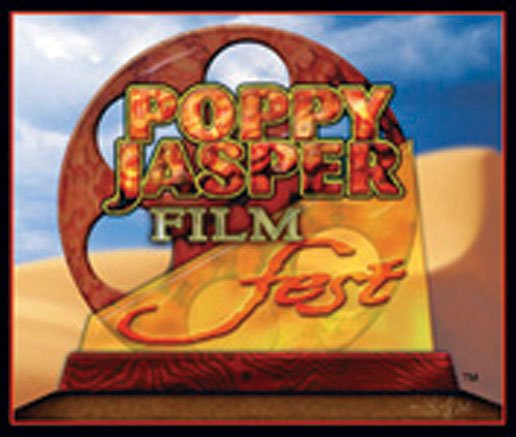Q: Did editors of two rival Hollister newspapers ever have a
murderous squabble?
A: Although it was not like HBO’s
”
Deadwood
”
by a long shot, in its frontier days the ranching community of
Hollister did have its share of violent gunfights on its streets.
And several of them involved respectable citizens of the
community.
Q: Did editors of two rival Hollister newspapers ever have a murderous squabble?
A: Although it was not like HBO’s “Deadwood” by a long shot, in its frontier days the ranching community of Hollister did have its share of violent gunfights on its streets. And several of them involved respectable citizens of the community.
One shootout in the 1870s involved a hot-tempered man named William “Buckskin Billy” Mooney. Apparently, David Gardner, the city’s Superintendent of the Water Works, had greatly angered Mooney for some reason now lost in recollection. The two met downtown on Fifth Street and had a public row. Both men pulled out their revolvers and shot it out. Mooney ended up six feet under. Gardner was tried in Monterey Court and after several days of the trial, he was acquitted on the grounds of self-defense. Witnesses said that Mooney had several times threatened the superintendent’s life and at the time of the homicide, Mooney was “looking for him.”
But Hollister’s most sensational shootout happened on Feb. 12, 1879, on the sidewalk corner in front of the town’s courthouse. It involved S. H. Brummett, who was the editor of the Hollister Enterprise newspaper (which later became the Free Lance), and G. W. Carlton, the editor of the Hollister Advance newspaper. Both editors had a great animosity for each other and partook of “scurrilous abuse on the part of both towards each other,” as Victorian-era reporters so colorfully depicted their intense relationship.
After a fracas, Carlton shot Brummett, killing the man. The sheriff charged the Advance editor with manslaughter. Many Hollister citizens were outraged because they believed first-degree murder was the more appropriate charge. The intense debate in town over the case made the judge decide to change the trial venue to the Santa Clara County Courthouse in San Jose.
The jury disagreed about the charges, leading to Carlton’s release. The editor never again set foot in Hollister and reportedly moved to Montana.
Q: What’s the story about Henry Miller and the bandit?
A: Gilroy’s Henry Miller was one of the West’s richest landowners. A Gold Rush-era pioneer, he accumulated a fortune of $50 million from raising cattle. At one point, “The Cattle King” owned about 1.5 million acres and controlled an additional 14.5 million acres – an area larger than Belgium.
One local legend holds that Miller had an encounter with a bandit while riding to the South Valley village of San Juan Bautista. The bandit took all his money, but, to have cash to buy food on the trip, Miller asked for a “loan” of $20. The surprised thief gave back $20 of Miller’s own money.
Two years later, while Clarence Fagalde, Miller’s foreman, was driving him in a carriage, the tycoon happened to see the outlaw who had robbed him. Miller shouted out, “Fagalde, stop! I owe that man some money.” Miller then promptly paid his $20 “debt.”
Q: Does Poppy Jasper have special magical properties?
A: Morgan Hill is famous for its Poppy Jasper gemstone, the city’s official rock since 2002. Scientifically known as “brecciated jasper,” it is a type of quartz that contains foreign materials that create its spotted golden poppy colors when cut and polished. It’s found primarily around the community’s landmark mountain El Toro. It also gave its name to Morgan Hill’s popular Poppy Jasper Film Festival and also to a delicious ale produced by El Toro Brewery.
Throughout the world, many cultures believe that beautiful jasper rocks possess significant magical properties. Europeans long ago said jasper is a “rain bringer.” Coincidentally, several Native American tribes also believe that jasper can help draw the storm clouds and their word for the gemstone means “rain bringer.”
Folklore also attributes many mystical powers to poppy jasper. Some believe the gem is perfect for environmentalists to carry around in jewelry because it inspires a deep connection with our planet and its variety of life forms. It also allegedly helps people develop a happier attitude on life and gives them a jolt of energy when they’re feeling tired.
The jewelry-selling Web site www.Tween-the-shades.com calls Poppy Jasper “a stone of energy and courage” and says the rock’s energy aligns with the root chakra field of the body.
“A protective stone, it enhances physical endurance and helps the wearer to ground and brings balance between the emotional and the physical,” the Web site says. “It was used in the Middle Ages by warriors to promote courage … Some say that it also useful in attuning with animals.”
Martin Cheek is the author of “The Silicon Valley Handbook.” His column runs every Saturday in the Gilroy Dispatch and Hollister Free Lance and every Tuesday in the Morgan Hill Times. He can be reached at ma**********@***il.com.













